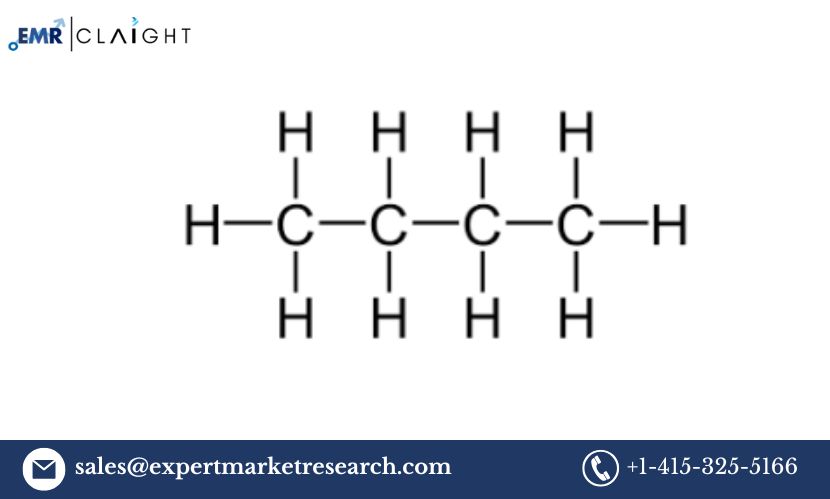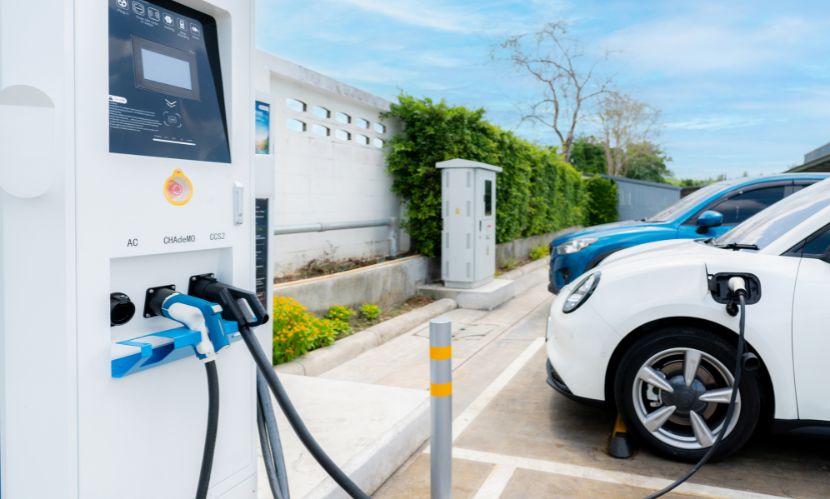Introduction
Butane, a highly versatile and flammable hydrocarbon, is commonly used as a fuel, refrigerant, and as an intermediate in the production of various chemicals. It is a significant by-product of natural gas processing and petroleum refining and is essential in many industries, including energy, chemicals, and even the automotive industry. The demand for butane is growing due to its increasing use in liquefied petroleum gas (LPG), as a feedstock for producing butadiene (a key component in synthetic rubber), and in aerosol propellants. This Butane Manufacturing Plant Project Report aims to provide comprehensive insights into the manufacturing process, plant setup, market potential, and financial considerations for establishing a butane manufacturing facility.
Market Overview
The global butane market has witnessed steady growth, driven by rising demand in various industrial applications. As a clean-burning fuel and an important raw material in the chemical industry, butane’s demand is tied to economic development, especially in emerging markets where the consumption of LPG is increasing.
Key Drivers for the Butane Market:
- Growing Demand for LPG: Butane is a significant component of LPG, which is used for cooking, heating, and as a fuel for vehicles. As more regions shift from traditional fuels to LPG, the demand for butane is expected to rise.
- Increasing Use in Petrochemical Industry: Butane is widely used as a feedstock in the production of other chemicals, such as butadiene and isobutene. These chemicals are essential for manufacturing synthetic rubber, plastics, and a variety of other materials.
- Rise in Demand for Aerosol Propellants: Butane is commonly used in aerosol products such as deodorants, air fresheners, and cleaning agents. The increasing demand for convenience products is driving the growth of the aerosol market, indirectly boosting butane consumption.
- Sustainability and Clean Energy: Butane is often considered a cleaner alternative to other fuels such as coal and wood, contributing to its growing role in clean energy initiatives.
Get a Free Sample Report with Table of Contents@
Applications of Butane:
- LPG: Butane is a key component of LPG, used as a domestic and industrial fuel.
- Petrochemical Industry: It is used as a feedstock for producing butadiene and isobutene.
- Aerosols: Butane is used as a propellant in aerosol sprays.
- Refrigerants: Butane is used as a refrigerant in various applications, including in domestic refrigerators and air conditioners.
- Fuel for Vehicles: In certain regions, butane is used as an alternative fuel for vehicles, especially in LPG-powered engines.
Manufacturing Process
Butane can be produced from a variety of sources, including natural gas processing, crude oil refining, and as a by-product of petrochemical processes. The primary process for its manufacturing involves the separation and recovery of butane from natural gas and petroleum products.
1. Raw Material Procurement
The main raw materials required for butane production are natural gas and crude oil. Both of these sources contain hydrocarbons, including butane, which are separated during refining or processing:
- Natural Gas: Natural gas is often processed to separate methane, ethane, propane, butanes, and heavier hydrocarbons. Butane is separated from other gases through compression and cooling.
- Crude Oil: During the refining process, crude oil is distilled into various fractions. Butane is separated as one of the lighter fractions through distillation.
2. Separation and Fractionation
The process of separating butane from natural gas or crude oil involves fractionation, which is carried out in distillation columns. The lighter hydrocarbons (such as methane, ethane, and propane) are separated at different points during the distillation process, while butane is recovered as a distinct fraction.
- Natural Gas Processing: Butane is separated from natural gas through a series of compression and cooling steps, followed by absorption and distillation.
- Crude Oil Refining: Butane is obtained from the atmospheric distillation unit in a petroleum refinery. The lighter fractions are distilled off and collected separately.
3. Purification and Compression
Once butane is separated, it must be purified to remove any impurities, such as sulfur, nitrogen, or other contaminants. This is typically done through processes like dehydrogenation, hydrodesulfurization, or chemical washing.
- Hydrodesulfurization: This process is used to remove sulfur compounds, which are typically present in natural gas and crude oil-based butane.
After purification, the butane is compressed into liquid form, making it easier to store and transport. It is then ready for packaging into pressurized containers or tanks for distribution.
4. Storage and Packaging
Butane is highly flammable and needs to be stored under pressure. The manufacturing facility should include storage tanks that are specifically designed to handle liquefied gases. The butane is typically stored in steel cylinders or larger tanks, and special care is taken to ensure safety during the storage process. The product is often distributed in liquid form in cylinders, which are further processed into various sizes depending on the application.
5. Distribution
Once the butane has been packaged and stored, it is distributed to various industries. Depending on the market, the butane may be transported via pipelines, tankers, or cylinders. Distribution is a critical part of the manufacturing process and requires efficient logistics to meet market demand.
Plant Layout and Design
The layout of a Butane Manufacturing Plant should be designed to ensure safe handling of flammable gases, efficient production processes, and smooth logistics. The key sections of the plant include:
1. Raw Material Storage
The storage facilities for raw materials, such as natural gas and crude oil, must be built in compliance with safety standards. These materials must be stored in tanks and pipelines that are resistant to pressure and temperature variations.
2. Processing and Fractionation Area
This section includes the distillation columns, compression units, and separators where butane is extracted from natural gas or crude oil. The area should be equipped with high-efficiency equipment for separation and fractionation to ensure the optimal recovery of butane.
3. Purification and Compression Section
This area handles the purification process, removing sulfur and other contaminants from the butane. It also includes the compression units, where the gas is liquefied for storage and transportation.
4. Storage and Packaging Area
The storage section includes large pressurized tanks and cylinders, where the finished butane product is stored. The packaging process ensures that butane is safely stored in cylinders or containers for transport.
5. Waste Treatment Section
Any waste products generated during the production process, including impurities and by-products, must be treated or recycled. Waste management systems should be integrated into the plant to minimize environmental impact.
Regulatory Compliance and Safety Considerations
Due to the flammable nature of butane, the manufacturing plant must adhere to stringent safety regulations and environmental standards:
1. Safety Standards
Safety is a top priority in any butane manufacturing plant. The plant must be equipped with fire suppression systems, gas leak detectors, and explosion-proof equipment. Personnel should be trained in safety protocols, and proper PPE (personal protective equipment) should be used.
2. Environmental Regulations
The plant must comply with local environmental laws regarding emissions, waste disposal, and water usage. Measures such as VOC (Volatile Organic Compound) recovery, waste water treatment, and air filtration systems are critical to minimize environmental impact.
3. Health and Safety Protocols
Proper ventilation and safety barriers must be in place to prevent any accidental exposure to dangerous chemicals. Regular maintenance of equipment and monitoring of gas levels is necessary to ensure a safe working environment.
Financial Considerations and Investment
The establishment of a Butane Manufacturing Plant requires significant capital investment in infrastructure, machinery, and raw materials. Below are some key financial aspects:
1. Capital Expenditure (CAPEX)
- Plant Construction: Investment in land, building, utilities, and safety infrastructure.
- Machinery and Equipment: Costs for distillation columns, compressors, purification units, and storage tanks.
- Raw Materials: Procurement of natural gas and crude oil for the production process.
2. Operating Expenses (OPEX)
- Labor Costs: Salaries for technicians, engineers, and operational staff.
- Energy Costs: Electricity and fuel consumption for running the machinery and distillation units.
- Maintenance: Ongoing costs for maintaining equipment and ensuring the plant runs efficiently.
3. Revenue Generation
Revenue from the plant will be generated through the sale of butane to various industries, including LPG distributors, petrochemical manufacturers, and aerosol companies. The ability to scale production and access diverse markets will be key to maximizing profitability.
Media Contact
Company Name: Claight Corporation
Contact Person: Lewis Fernandas, Corporate Sales Specialist — U.S.A.
Email: sales@expertmarketresearch.com
Toll Free Number: +1–415–325–5166 | +44–702–402–5790
Address: 30 North Gould Street, Sheridan, WY 82801, USA
Website: www.expertmarketresearch.com
Aus Site: https://www.expertmarketresearch.com.au


